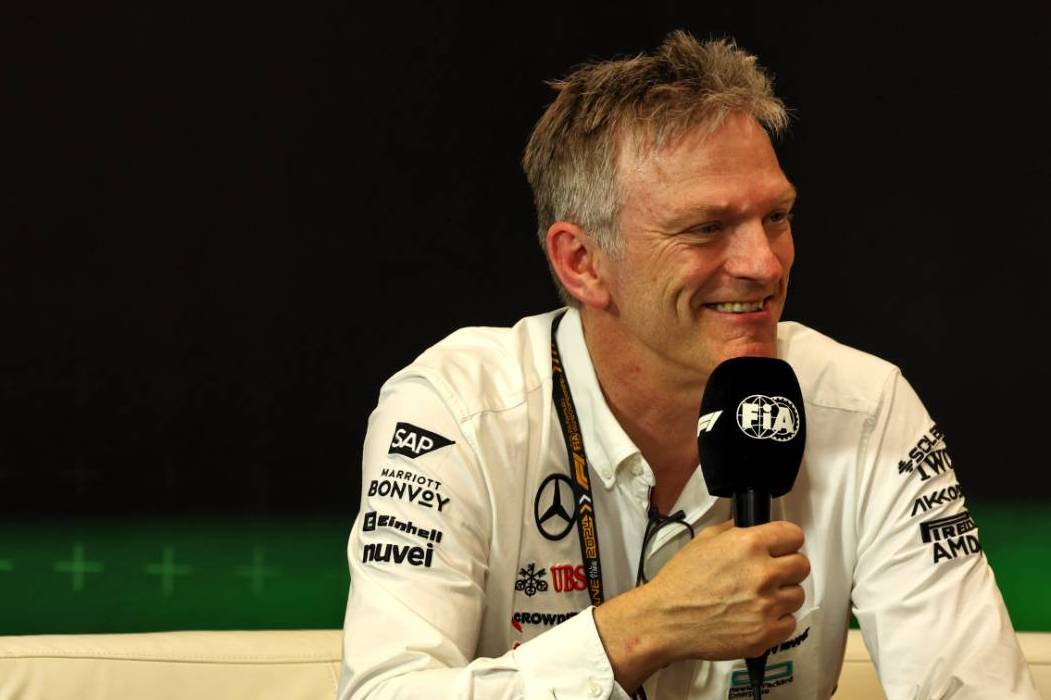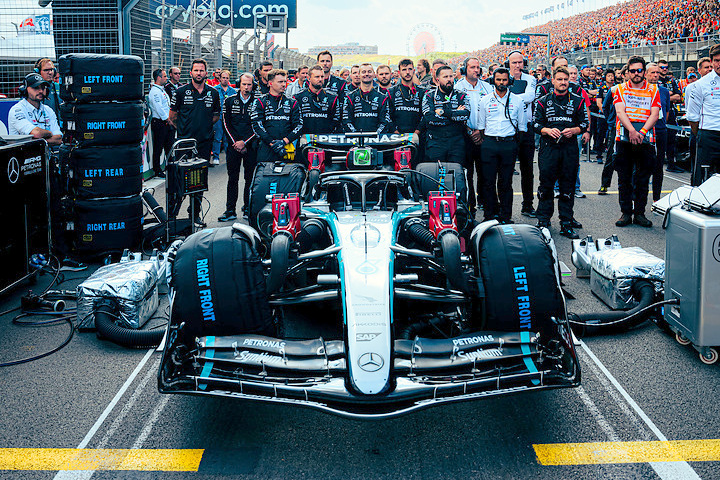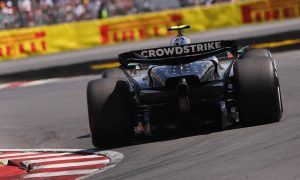
Mercedes admits that’s its initial optimism regarding the new floor introduced on its W15 car at Spa may have been misguided based on the team’s disappointing performance at Zandvoort.
The Brackley squad evaluated the new aero element in Friday’s practice at the Belgian Grand Prix but eventually opted to revert to the floor’s previous specification for the remainder of its weekend.
However positive data collected at Spa encouraged Mercedes to commit to the updated component for the duration of last weekend’s Dutch Grand Prix. But results were sub-optimal, with George Russell and Lewis Hamilton concluding their race on Sunday a distant seventh and eighth.
The disappointing performance has inevitably raised fresh questions about whether the new floor design might be causing more harm than good, even despite the element producing more downforce.
Mercedes technical director James Allison has suggested that the floor may be causing negative balance characteristics, which could ultimately result in an overall loss of lap time.
Read also:
Speaking in Mercedes’ usual post-race debrief video on YouTube, Allison explained that the team is still working hard to understand exactly how the new floor is affecting the car's performance.
“Simple answer is, we don't fully know,” Allison said. “You can take some straightforward measurements and say that the downforce it was supposed to deliver looked like it was there.
“So at one level, you could take comfort that it worked as expected.”

Mercedes technical director James Allison.
Allison elaborated on the complexities of aerodynamics and vehicle balance that go beyond simply generating downforce.
“A lot of the pace of the cars in this year, particularly, is down to how well they handle.
“So it's not just a question of ‘does your aero package deliver you downforce’, but is it delivering you the balanced car that you need through the corners? Is it delivering you the balanced car you need from high speed to low speed?”
The balance issues were evident during the Dutch Grand Prix, where both Russell and Hamilton struggled during qualifying due to poor car balance, which led to overheating the tyres.
Allison emphasized the impact of this instability on their performance.
“We definitely know that we didn't have a well-balanced car this weekend,” he added.
“That's where most of our pace went. Whether that was the new floor, the new aero package or not, we need to keep an open mind and something we will need to revisit in future races.
“Right now, we know it measured the downforce, but we're not certain that it delivered good balance. Something we need to investigate as we go on through the year.”

©Mercedes
The problems were particularly pronounced in qualifying, as Allison described how the car's unpredictable handling compromised their ability to extract the maximum performance from their tyres.
“We, for whatever reason, managed to produce a car that was too on a knife edge,” commented the British engineer.
“It was too ready to snap at the rear, for the rear to lose grip and contact with the road when the drivers are trying to hustle it. And qualifying is when they need to lean on the car and we could get a really good lap if they just managed to keep this very pointy car sort of on rails.
“Just the tiniest slip of the rear caused by a gust, caused by whatever, and then the rear tyres will light up. The temperature of the surface of the rubber goes up dramatically just with one tiny little slip.
“As soon as that surface temperature is up, it doesn't recover for several corners. The corners come at you thick and fast in Zandvoort and there's not really any long straights for them to cool down on. And so one snap, that's your lap gone.”
Keep up to date with all the F1 news via Facebook and Twitter






